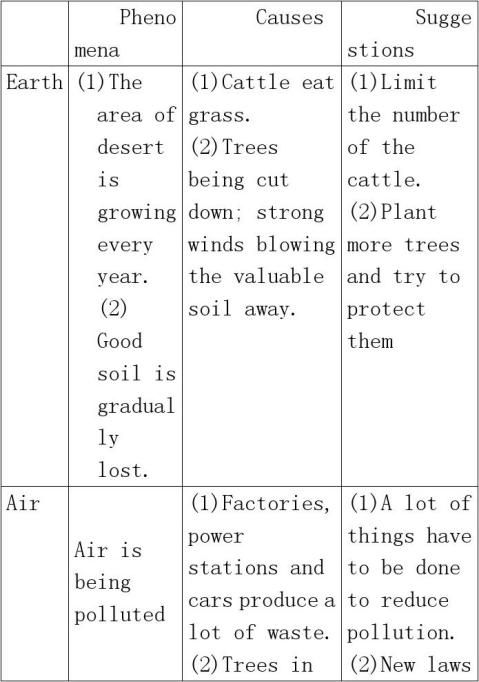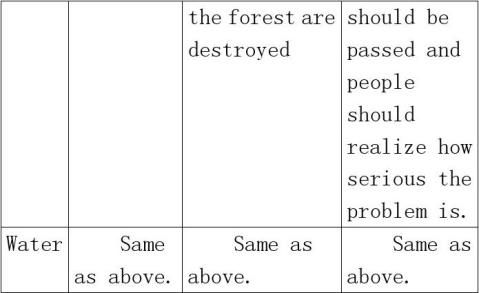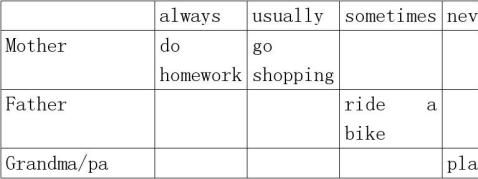打开自己那扇门—“小孩不笨”之感
在学校, 学生们被分了等级, 那只是一个小学的学校, 在孩子们弱小的心灵里,已经觉得, 因为自己成绩不好, 被分到差的班里,自己的人生已经失败了一大半. 不但如此, 学校的老师, 大多都戴着很深的有色眼镜, 成绩好的学生可以随意打骂, 侮辱成绩差的学生, 却没有任何惩罚; 成绩差的他们, 即使什么都没做,却总是被请到校长室, 让被请来家长, 和老师们一起责骂. 他们没有机会为自己辩解, 或者说即使他们说出真相, 却总被认为是为了减轻惩罚而说出的谎言.
学习不好的孩子, 又有什么错呢? 分数, 文凭, 对大人们而言, 对整个社会而言, 真的那么重要吗? 为了让自己的孩子夺取高的分数, 大人付出了高昂的金钱, 更甚的, 付出了他们的时间, 精力, 他们有想过,他们所谓的”for your own good” 是否真的是为孩子们好吗? 真的是孩子们真正需要的吗? 孩子失去了天真的童年, 失去了属于他们欢乐的时光, 是谁的错? “不是我们的错,是这个社会的错” 对, 作为社会的一份子, 我们总是无奈地被这个社会的舆论和眼光牵着走. 父母们谈起孩子, 分数, 学校, 课外学习, 都是他们主要的攀比话题, 为了不让别人瞧不起自己,只好把这种压力, 转到了孩子身上. 大人们自己也意识到了,然而, 几乎没有人敢逆流而行. 这, 就是人生的无奈吧!
老师眼里, 对一帮扶不上壁的烂泥, 也放任自流. 有经验的老师说的自有他们的道理, 而新的老师也有她一套把烂泥扶上壁的做法. 不知道, 过多几年,当新的老师成为有经验的老师的时候, 她的想法, 会不会有所改变呢? 教育, 究竟是育人, 还是愚人? 教育工作者, 又有没有好好想过? 特别是小学的老师, 他们的一句话, 可以让一个毫不起色的孩子变成伟人, 也可以让一个聪明有灵气的孩子变得精神分裂. 他们是否了解自己对孩子来说,是会产生多大影响的人呢?
当看到同伴受欺负, 有孩子站出来一起面对, 也有孩子因为家庭压力变得对身边发生的事情”none of my business(这和我没有任何关系)”. 他们在共同经历中,不断体会什么是对的, 什么是错的; 什么该做, 什么不该做; 大人的话, 什么时候该听,什么时候该经
过自己的思考, 作出自己的决定??大人们不也需要好好思考, 连自己都经常做矛盾的事, 怎么不令孩子在没建立正确的判断能力之前感到”confuse(困惑)”呢?
戏中, 让我们感动, 让我们思考的地方, 还有很多很多. 虽然是一部轻松, 励智的戏, 却让我流下无数复杂的眼泪.
“小孩不笨2”则是与第一辑不太相连的剧, 可以说是一部轻松搞笑的喜剧, 戏中, 也有含泪思考的部分, 相对第一辑来讲, 这样的成分已经少了很多. 可能孩子长大了, 要带出的, 是另外的寓意. 看戏的朋友, 就自己用心体会咯!
无论大人还是小孩, 只要相信, 这个世界造了自己出来, 一定有自己有用的地方, 千万不要因为前面有石头, 就停步不前, 勇敢走上去, 把石头搬开, 继续走下去
第二篇:教育学教案模板
案例10(Body Language)
Goal
? Get students to learn about body language around the world.
? Improve students’reading comprehension, especially the ability of outlining a passage and summing up the main idea of the whole passage and each part.
? Get students to know the importance of using body language correctly in different cultures.
? Enable students to talk about body language freely using the expressions learned in the text.
Procedures
Leading in by questioning. (lockstep, approx. 5 mins)
Yesterday we talked about body language. We know, without using 11 《学英语》报社编,《英语新教材金色教案》,书海出版社,20xx年版,第209-211页。
language we can still make ourselves understood and make sense of the message that others are sending to us.
But do people in different parts of world use the same body language?
For instance, when you want to communicate the idea “Come here”, what will you do? (Ask the students to perform) Yes, you may act like this. (Demonstrate the gesture with the palm down.)
If I act like this (with the palm up), what do you think of my gesture? Yes, you may think it is not respectful. But Americans do act like that.
Right, in different parts of the world, body languages are different. Then, how different are they, partially or completely? And in what ways are they different? We can find the answers in BODY TALK we are going to read today. Task 1: Fast reading. (individual and pair work, approx. 10 mins)
Now is the time to fast read the article to get its general idea.
After reading, you may check your answers to the post-reading questions on page 60 against those of your neighbor’s.
(General idea: Body language varies from culture to culture; meanwhile some gestures seem to be universal.)
Task 2: Reading for the discourse pattern. (individual and pair work, approx. 10 mins)
Read the passage again carefully and try to find out how many parts it can be divided into, summing up the main idea of each part.
Discuss in pairs what the discourse pattern of the passage will be like. Part 1. Introduction to body language. (The first paragraph)
Part 2. Body language in different parts of the world.
a.Different interpretations of the same gesture. (The second paragraph)
b.Different gestures to communicate the same idea. (The third paragraph)
c.Some universal gestures. (The last two paragraphs)
Task 3: Explaining different points. (lockstep, approx. 5 mins)
As reading, did you find any points difficult to understand? Which word? Which sentences?
Let’s have a question and answer to settle all those difficult points. Body language in
life a smile and a handshake
holding up one’s
head
hanging one’s head
kissing
keeping one’s
finger on both hands crossed
moving index finger from side to side pulling one’s ear pulling one’s lower eyelid
putting up a hand rubbing the thumb and forefinger together
rolling one’s eyes shrugging one’s shoulders
stroking one’s chin thumbs up turning one’s finger on one’s temple
waving one’s arms waving one’s hand
Task 4: Having a discussion. (group work,
approx. 10 mins)
Next I shall divide the class into 5 big groups, and give each group one topic. Discuss the topic in your group, and then choose one student to report his group’s opinion to the class.
What are some situations where we need to be very careful about our body language and gestures?
How is body language different from spoken language? What do they have in common?
Sometimes we say one thing but our body language says something different. Why does this happen? Can you think of any examples?
Do you think that culture has any influence over body language? Why do you think so?
If we communicate with a foreigner using his language, do we need to learn to use his body language? Why?
Closing up by summarizing. (lockstep, approx. 5 mins)
Just like verbal language, body language is part of culture. It plays an important role in daily communication. So, it is very important to understand and use it correctly. And for a foreign language learner, it is as necessary to learn the body language as to learn the verbal language.
Homework
As homework, you are to write a short passage about body language. Notes
Use the –ing form
Write the passage within 80-120 words. Comments
1.Not only the steps of the whole class, but also the key ponts of the text is well organized. So the atmosphere of the class is happy and easy.
The affective communication bewteen the
teacher and students is effeicent. Students are actively involved in the activities of the class, expressing their ideas and dicussing the points of topics.
案例10(Saving the Earth)
教学对象:高二学生
1 教学目标
1)认知目标:了解并掌握所学的英语句型,词汇以及对环境保护这一话题时的一般用语以及筛选信息技能。
2)能力目标:学会本课中的新单词、句型,学会用英文进行关于“环境”这一话题的交流。提高课外的英语资料查阅的水平和整理资料的能力。英语的听说能力有所提高,掌握阅读的语言技巧。
3)情感目标:让学生在学习课文的过程中体验地球对我们的价值。然后,把课文的内容与学生们平时的所见所闻所行的经验相结合,得出自己的结论。加强师生之间,学生之间的情感交流,提高学生对英语的喜爱
程度。
2 教学内容
1)课文:人民教育出版社20xx年版的全日制高级中学英语教材第三册,第34课。
2)本课内容:关于课文的介绍和相关语言点的学习,对这一话题进行讨论。
3)教辅材料:相关地球污染和采取保护措施的信息资料,相关照片、图片,磁带,录音机,多媒体。
3 教学步骤
1)导入课文,师生共论
A.教师在多媒体屏幕上显示中国大好河山的图片,之后又显示环境受到污染的图片。两者形成对比,使学生形成情感和色觉对比。
学生讲述自己搜寻来的资料,评出最佳“口才奖”和“创新奖”。(在这一阶段中,学生可以采用访谈的方式搜寻资料,也可以在教师的帮助下根据相关网址查询资料:
.cn .cn )
B.学生观察课文上的地图,并发表自己的见解。
2)精析课文,内容探讨
A.教师让学生听课文录音,并判断相关问题的正误。
问题如下:
a. Land may become poor if farmers do not limit the numbers of their cattle. (T) b. Good soil is gradually lost these days as trees are being cut down. (T) c. Air pollution and water pollution are the two causes of the problem that many parts of the world have become deserts. (F)
d. Chemicals in the smoke from power stations can travel hundreds of miles in the wind before falling down to the ground in the rain. (F)
e. After a bad accident at a nuclear power station, 50% of the trees in
Germany were damaged. (F)
f. Once oceans are polluted, they are not able to clean themselves. (F)
B.重新阅读整篇文章下面问题,并填好表格。(可以进行两两讨论回答) 问题如下:
a. Why is the area of desert growing every year?
b. Why do cattle have something to do with the growing desert?
c. What can be done to stop land from turning into desert?
d. What are the causes of air pollution? e. What damage can cause chemical rain? f. What had happened in Germany by 1986? g. What is the general cause of water pollution?
h. Why is the Mediterranean not able to clean itself once it is polluted? i. What problems do lakes have?
表格如下:(回答的答案可以超越课文内容的范围。)


3)角色表演,深化主体
教师让每组学生准备五分钟,以“I am air/earth/water??”为开头说一段话,有其他小组的同学和老师进行点评。
4)语言操练
A学会运用四会词语并初步掌握过去分词作表语和定语的用法。
a. Cattle are one of the causes of the problem.
He has twenty ______ (cattle) on the farm.
limit the number of thin cattle.
We’re all _______ (please) to see that ________ (smile) child.
They are hardly any fish _______
(leave) in the ________ (pollute)
lake.
c. Many of the injured lost their sight. The rich _______ (look) down upon the poor.
d. ___________ that 125000 people died in Russia as a result of illness caused
by this accident.
A. It is thought B. People think
C. People thought D. A or B
4)回家作业
A 教师要求学生根据以下问题写一篇短文。 a.What kind of pollution can you think of?
b. Why trees are important?
c. What else do we know about the
problems that the earth is facing?
d. What steps should we take to save the earth?
B 就中国发生的“SARS”问题发表自己的看法。(形式不限,优秀作文张贴展览)
4 探究活动形式
1)小组调查,网上查询,合作探讨,拓展话题,发散思维。
2)图片对比,教师说解,词汇和句法练习。
5 教学评价
1)自评
A.学生以思考、讨论、交流和合作探究的形式,学习英语,提高了英语的综合表达能力。
B.展示我们身边的环境污染问题的图片和锦绣山河的图片是作对比是激发学生情感的好方法,教师以此为开发点,让学生根据自己的体会,提高环保意识。
2)点评
A.环保是当前的热点,通过这堂课学生不仅学到了英语知识,更是学到了生存知识,
上了一堂很好的思想道德修养课。
B.本课的亮点在于回家作业,结合“SARS”谈谈对环境的看法,把课堂和当前的实事政治相练习起来,并通过展览的形式加强了环保宣传。
16.3参考教案:
案例1(Families)
The within-dimension targets and target-related objectives covered in this unit are listed below:
Social Interaction Target (S.I.) Target-related objectives:
Learners-
a. use English to establish and maintain relationships and routines in the school environment
b. converse with others about feelings, experiences
1 the Education Department Hong Kong, Programme Of Study For English Key Stage 2, Hong Kong, 1992.
Problem-solving with Others Targets (P.S.)
Target-related objectives:
Learners-
d. solve simple problems with others
Developing Knowledge Target (D.K.) Target-related objectives:
a. identify, name and make connections among concepts and their related procedures drawn from learning in English and in other subjects in the course of creating and using texts c. clarify ideas through drafting and redrafting written expression and through talk with others
e. listen to and read simple spoken and written texts and present the ideas in simple spoken and written form
Personal Response Target (P.R.) Target-related objectives:
Learners-
b. participate in individual or choral verse-speaking or story-telling
d. relate texts to personal experiences
Personal Expression Target (P.E.) Target-related objectives:
Learners-
a. create a short, simple poem with teacher support, and share this with others
Tasks Family members
Learners meet the family of the teacher, of a cartoon character, of a story book character or of a monster character through a photo album compiled by the teacher or by other students. They look at labelled photos of that person’s mother, father, grandfather, grandmother, aunt, uncle, cousins, etc. They say who that person looks like in
their family (e.g. You look like your mother. You both have big eyes. / You look like your grandfather. You have the same mouth.). (D. K. a) The biggest family
Learners make a list of how many brothers, sisters, grandmothers, aunts, cousins etc. they have. They do not show their lists to anyone. In groups of four, learners challenge each other on the number of their family members (e.g. think I’ve got fewer brothers than you. – O.K. How many brothers have you got?). The challenger answers and if the challenger is correct, i.e. he/she does have fewer brothers then he/she gets a point, but if the challenger is wrong then his/her partner gets a point. Learners then share their lists with the class to see who has the biggest /smallest family, the most/fewer brothers, sisters, cousins, etc.
(S.I.b)
A family tree
Learners are invited to bring some family photos to school to share with the class. Alternatively, they draw their family members and label them. Learners complete a family tree by drawing the faces or putting in a photo of the different family members in the circles of the family tree, and stating the relationship of each person to themselves on the lines that join them to each of the family members, e.g.:


grandma

dad
me brother
Introduction family members
1.Learners role-play a family situation in groups of eight. There is a child (called Child 1) and 6 members of the family, i.e. the grandmother, grandfather, mother, father, sister and brother. The eight member of the group is the school friend of Child 1. Child 1 brings this friend home to meet the family. Child 1 introduces each member of the family in turn to the friend, e.g.:
Childn 1: This is my mother.
Mum, this is my friend, Ming Fai.
Mother and Ming Fai shake hands and say: How do you do. Nice to meet you.
This pattern is repeated for the other family members. (S.I.a)
2.Learners vary the role-play. Child 1
introduces one family member to his/her friend as above. The family member introduces another family member. Child 1 then states his/her relationship to that family member, e.g.
Child1: This is my mother.
Mum, this is my friend Ming Fai. Mother: (shake hands) How do you do. Nice to meet you.
Friend: (shake hands) How do you do. Nice to meet you, too.
Mother: This is my husband.
Child1: That’s my father.
Father: (shake hands) How do you do. The role-play continues. For example, the father introduces his father (Child 1’s grandfather), the grandfather introduces his wife (Child 1’s grandmother), and the grandmother introduces her grand-daughter and grandson (Child 1’s sister and brother).
(S.I.a)
A list of relationships
Learners, in pairs, make a list of all the relationships they have with their family, e.g. son/daughter, brother/sister, granddaughter/grandson, niece/nephew/cousin, etc. they exchange their list with another pair to see if they have the same list of relationships. They state the reasons for any difference, e.g. I am not a sister because I am an only child. They describe their roles (e.g. I am a daughter) to the class to see which learners have the most roles. (P.S.d)
My friend’s family
Based on given questions, learners in pairs ask their partner about his/her family (e.g. Who is taller/shorter than you in your family? Who is younger/older
than you in your family? Who is the tallest/oldest/youngest in your family?). They write a sentence in answer to each question about their partner’s family. Using the information, learners give simple description of their partner’s family to the class. (D.K.e)
1.Learners share reading a story or chorally recite a poem about family members e.g. My Grandpa is Amazing; My Grandma is Wonderful; “These are Grandmother’s Glasses” from This Little Puffin. (P.R.b)
2.Learners think about a family member they love and draw a picture of that person. Then they write a first draft of a description of four sentences, based on the headings on the board. They state who they love, the height
and body size, the eyes and hair, and one thing that family member does which they especially like or which makes that person lovable/wonderful/amazing/great. They exchange their draft with a partner to check if they have written four sentences and if each sentence contains the information as suggested above. Then they check if they can see any spelling mistakes, if words are missing, etc. Each learner writes a final description. The descriptions are attached to the drawings and displayed in the room for other learners to read. Alternatively, the drawings are stapled into a booklet entitled “Our Families” and it is added to the class library. (D.K.c) Activities done with family members
1.Learners complete a chart to show the
activities or jobs they do regularly with different family members. The chart has the “How often” words filled in along the top. Learners fill in the names of five or six family members down the left hand column. Then they write some activities that they do (or do not do) with each family member. Learners are guided to complete the chart by answering questions such as: What do you always do with your mother/father? What do you sometimes do with a grandparent? What do you never do with your brother?
(D.K.a)
For example,


2.Learners, in groups of four, share the information on their charts. They take turns to ask one other person in the group who they always/usually/sometimes/never do one activity with and they write the answer down (e.g. Mai Lee always rides her bike with her father; Ming Fai never plays mahjong with his grandmother.). Each group then reports its findings to the whole class. (D.K.a)
Learners share animal stories about a baby animal who has an adventure, loses its family and finds it again( e.g. Panda Climbs; Tiger Runs; and Elephant Bathes by Derek Hall in the World Wide Fund series). Learners recall and share their
own experiences of getting separated accidentally from a family member and being found again, e.g. in a store. (P.R.d)
Roles of parents and their young
Learners participate in jigsaw reading. They are divided into five groups. Each group receives a chart showing the names and pictures of some animals, and some questions about the roles of these animals as parents (e.g. Do they lay eggs of have young? Which parent looks after the eggs/ the young and feeds them? For how long do parents look after the young? Which parent does the young live with and where?). Then each group reads three or four sentences (adapted from a Children’s Encyclopedia) with pictures about the roles of one kind animal. Learners fill in the information for their animal on the chart by writing
short answers to questions such as: Who looks after penguin eggs? The father.
Where does a baby kangaroo live? In its mother’s pouch.
Learners form new groups of 10, with two learners from each of the original 5 groups making up the ten. In each new group, learners complete the chart with information about the other animals by asking the relevant pair in the questions and writing their replies on the chart in the appropriate place. The charts are displayed and compared.
(D.K.e)
A family occasion
Learners look at pictures and talk about times when the family is all together, e.g. Ching Ming, Winter Solstice, Chinese New Year or a wedding. They are led to talk about the different family
events by referring to their sensory experience, i.e. what they see, hear, smell, taste, touch or feel. The teacher writes their ideas on the board for two or three different occasions and then they improve the list on the board by adding adjectives and other descriptions. Learners write a simple poem about one family occasion that they love. The poem begins each line with “I love ??” followed by a sense experience, e.g.
I love seeing ??.
I love hearing ??.
I love feeling ??.
Learners read their poems to each other. (P.E.a)
